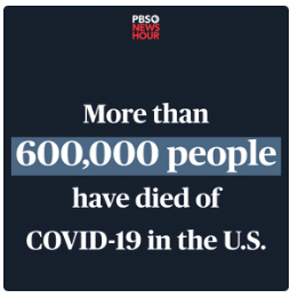Radar on Specialty Pharmacy
-
News Briefs: J&J, AbbVie Units Will Withdraw Two Imbruvica Indications
The Janssen Pharmaceutical Companies of Johnson & Johnson and AbbVie Inc. unit Pharmacyclics LLC are voluntarily withdrawing two indications for Imbruvica (ibrutinib) that had accelerated approval, the companies said on April 6. Following consultation with the FDA, the companies will remove two non-Hodgkin’s lymphoma indications from the drug’s label: the treatment of people with mantle cell lymphoma (MCL) who have received at least one prior therapy, and the treatment of marginal zone lymphoma (MZL) in people who require systemic therapy and have received at least one anti-CD20-based therapy. The decision follows discussion of the results of two Phase III studies — SHINE for MCL and SELENE for MZL — with the FDA, which “advised that the primary outcomes…were considered insufficient to support conversion to full approval.” The Bruton’s tyrosine kinase inhibitor’s other FDA-approved indications, which comprise four disease areas, including three hematologic cancers, are not impacted. The agency first approved the drug on Nov. 13, 2013, when it granted accelerated approval for the MCL indication. It gave accelerated approval for MZL use on Jan. 19, 2017. Since 2020, more than 20 oncology indications and/or drugs approved through the accelerated pathway have been withdrawn.
-
Congressional Committee Launches Investigation of Big Three PBMs’ Business Practices
A little more than a year after Rep. James Comer (R-Ky.), then-ranking member of the House Committee on Oversight and Reform, released a report on PBMs’ business practices and their negative impact on drug prices, patients’ health and market competition, the now-Chairman Comer revealed that he is launching an investigation into those practices. The move continues to keep pressure on the entities over some of their practices and lack of transparency amid concerns around prescription drug prices.
On March 1, Comer sent letters to senior officials at the Office of Personnel Management (OPM), Defense Health Agency (DHA) and CMS, as well as to the three largest PBMs — Cigna Corp.’s Express Scripts, CVS Health Corp.’s Caremark and UnitedHealth Group’s Optum Rx — requesting a trove of documents and communications.

-
Report Shows Growing Provider Acceptance, Understanding of Biosimilars
The U.S. biosimilars market is a dynamic and ever-evolving space, and a recent report shows growing acceptance of the medications among providers. Last year saw a handful of milestones related to these agents, and this year, particularly with the launches of biosimilars of AbbVie Inc.’s Humira (adalimumab), is likely to continue the trend, according to a recent report from Cardinal Health.
Titled 2023 Biosimilars Report: tracking market expansion and sustainability amidst a shifting industry, the report is based on responses to web-based surveys conducted in 2022 from both community- and hospital-based practices. Providers were from “therapeutic areas with the most potential for disruption in the year ahead.” Cardinal Health polled more than 100 rheumatologists in July and August, 125 dermatologists in September, 70 gastroenterologists in September and October, and 60 retina specialists in September and October.

-
Gilead’s First-in-Class HIV Drug Sunlenca Offers Much-Needed Option
The FDA recently approved a new HIV drug for a small patient population desperately in need of treatments. And the twice-yearly medication’s annual price came below the level that respondents to a Zitter Insights poll said they would consider a good value. The medication comes with both potential advantages and disadvantages for patients, providers and payers, say industry experts.
On Dec. 22, the FDA approved Gilead Sciences, Inc.’s Sunlenca (lenacapavir) for the treatment, in combination with other antiretroviral(s) (ARVs), of HIV-1 infection in heavily treatment-experienced adults with multidrug resistant HIV-1 infection who are failing their current antiretroviral regimen due to resistance, intolerance or safety considerations. The agency gave the first-in-class capsid inhibitor priority review, fast track and breakthrough therapy designations.

-
As Breast Cancer Treatments Continue to Evolve, a Few Stand Out
Breast cancer is the most common cancer diagnosed in American women and the most common cancer globally. Estimates show that more than 300,000 people in the U.S. are expected to be diagnosed this year alone, almost 3,000 of them men.
When the FDA first approved Genentech, Inc.’s Herceptin (trastuzumab) on Sept. 25, 1998, for the treatment of people with breast cancer whose tumors overexpress the human epidermal growth factor receptor-2 (HER2) protein, the drug offered a new targeted approach to treating the disease. In the years since, researchers have identified other subtypes of the cancer and developed newer agents indicated for specific types and stages of the disease.












